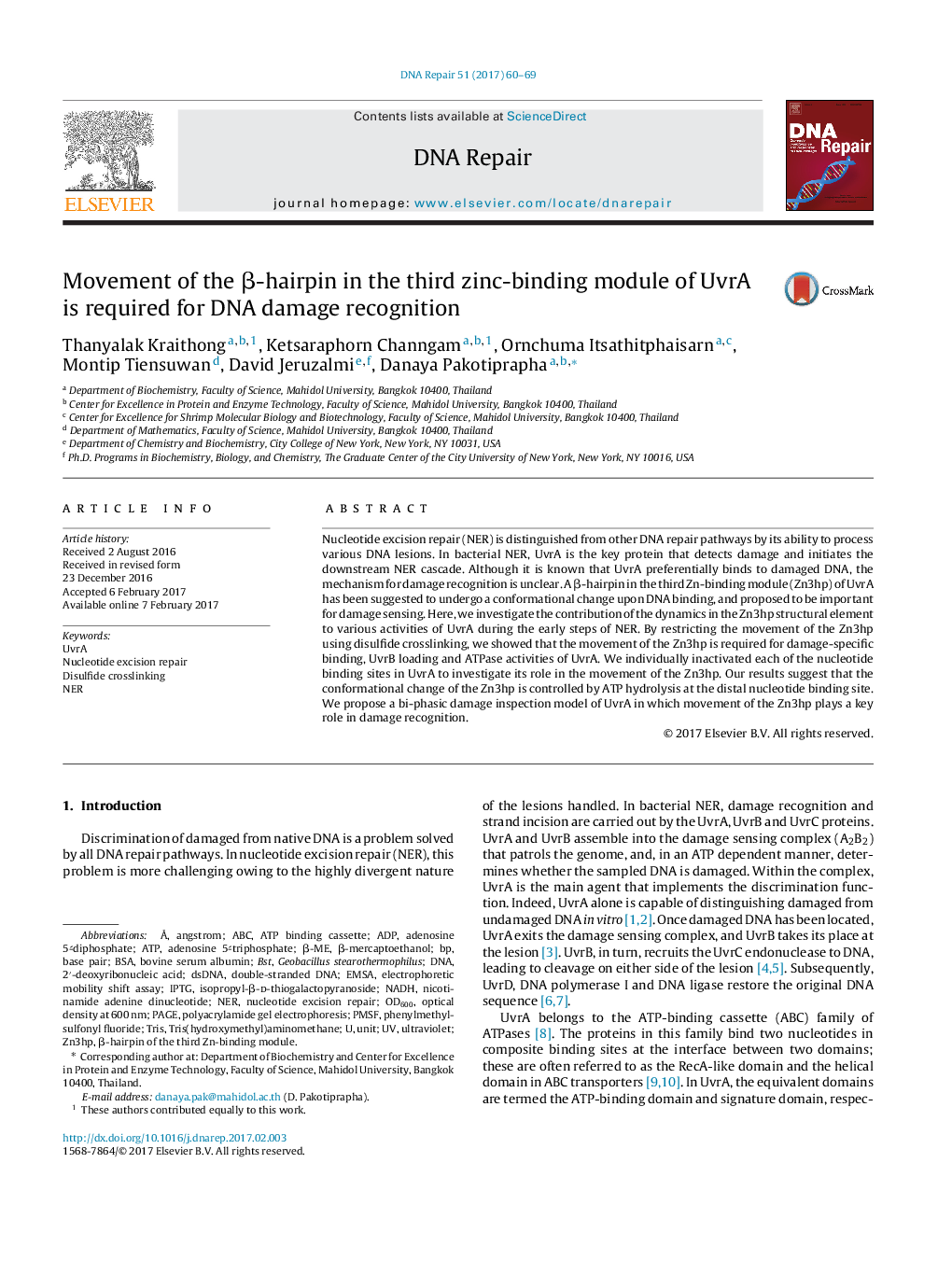| Article ID | Journal | Published Year | Pages | File Type |
|---|---|---|---|---|
| 5511081 | DNA Repair | 2017 | 10 Pages |
Abstract
Nucleotide excision repair (NER) is distinguished from other DNA repair pathways by its ability to process various DNA lesions. In bacterial NER, UvrA is the key protein that detects damage and initiates the downstream NER cascade. Although it is known that UvrA preferentially binds to damaged DNA, the mechanism for damage recognition is unclear. A β-hairpin in the third Zn-binding module (Zn3hp) of UvrA has been suggested to undergo a conformational change upon DNA binding, and proposed to be important for damage sensing. Here, we investigate the contribution of the dynamics in the Zn3hp structural element to various activities of UvrA during the early steps of NER. By restricting the movement of the Zn3hp using disulfide crosslinking, we showed that the movement of the Zn3hp is required for damage-specific binding, UvrB loading and ATPase activities of UvrA. We individually inactivated each of the nucleotide binding sites in UvrA to investigate its role in the movement of the Zn3hp. Our results suggest that the conformational change of the Zn3hp is controlled by ATP hydrolysis at the distal nucleotide binding site. We propose a bi-phasic damage inspection model of UvrA in which movement of the Zn3hp plays a key role in damage recognition.
Keywords
BSTUvrAOD600TRISABCADPPMSFPAGEIPTGdsDNABSADNANERATPElectrophoretic mobility shift assaybovine serum albuminUltravioletpolyacrylamide gel electrophoresisAngströmoptical density at 600 nmTris(hydroxymethyl)aminomethanenucleotide excision repairbase pairEMSA یا electrophoretic mobility shift assay phenylmethylsulfonyl fluorideNADHNAD, nicotinamide adenine dinucleotideunitDisulfide crosslinkingGeobacillus stearothermophilusATP binding cassette
Related Topics
Life Sciences
Biochemistry, Genetics and Molecular Biology
Biochemistry
Authors
Thanyalak Kraithong, Ketsaraphorn Channgam, Ornchuma Itsathitphaisarn, Montip Tiensuwan, David Jeruzalmi, Danaya Pakotiprapha,
